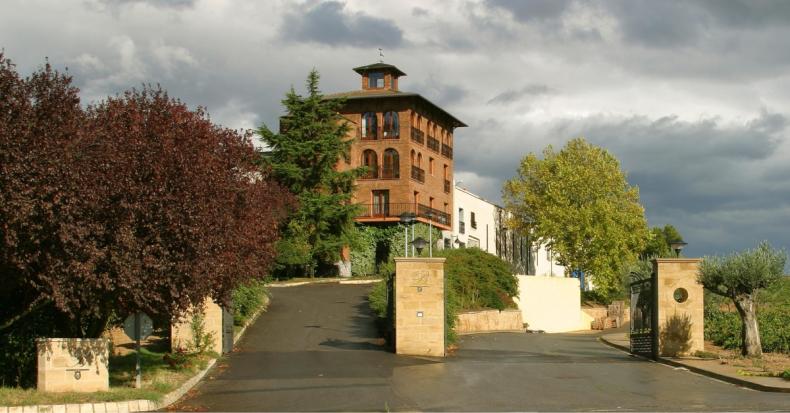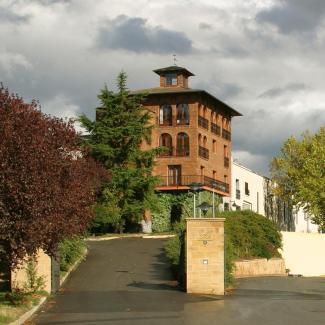Welcome to Beronia’s Guide To The Wines Of Rioja. In this guide, you can learn more about the history of this world-class wine region.
We hope you will find this guide informative and enjoyable. If you’d like to know more about Beronia Rioja, then please sign up for our newsletter or join the conversation on social media. You can find us on Facebook and Instagram.
The Wines of Rioja: A Brief History
Wine has been made in Rioja since the practice was introduced by the Romans who conquered the region in the second century BCE. For over a thousand years the practices these ancient invaders introduced were adhered to, largely by small, independent producers who either consumed the wines themselves or sold them locally. These wines were largely produced from grape varieties that we see to this day, vines such as Tempranillo, which was introduced by the Phoenicians in around 600 BCE.
The so-called ‘modern age’ of Rioja arrived in the middle of the sixteenth century when producers agreed to common labelling. In 1787, producers became more organised and formed the ‘Real Junta de Cosecheros’, a board that set out to regulate how Rioja was made and to promote the region’s wines.
The next big development – certainly in commercial terms – was the coming of the railway. In 1864 the line between Tuleda and Bilbao was completed which included a stop in Haro. Haro is regarded by many as the heart of the Rioja wine industry. Indeed, our home in Ollauri is just a 10-minute drive from Haro. While the station wasn’t officially opened until 1880, the impact of the railway’s arrival was immediate and huge.
The wines of Rioja had long been revered locally but being produced in a hilly area with the nearest major port, Bilboa, nearly sixty miles away meant exporting them was nigh on impossible. A direct rail line to Bilboa changed this and gave producers easy access to markets in Germany, the UK, and the US. Almost overnight, the Rioja’s wines went from being regionally prized to internationally sought after.
The next event to have a lasting impact on the wines of Rioja, didn’t take place in Rioja. It didn’t even happen in Spain, but in France. During the mid-nineteenth century, the vineyards of southern France – notably in the Languedoc and, latterly, the Roussillon – were devasted by the arrival of phylloxera.
Phylloxera is a beetle that chews on the roots of vines, draining the sap and killing them. There’s (still) no cure for this and the only way to get rid of it is to rip out (grub up) the affected vines and replant the vineyard on more resistant American rootstocks. As a vine typically takes three years to produce any fruit and a good while longer to produce fruit capable of making fine wine, its arrival was a disaster.
By 1869 phylloxera had found its way to Bordeaux where it tore through prized vineyards like wildfire. No commune was left unaffected, and skilled winemakers were left jobless and châteaux owners left without an income. What to do?
What they did was pack up their troubles and move to Rioja, a trip of around 260 miles. At the time most of the region’s wines were sold in bulk, but the underlying quality was such that smart Bordeaux winemakers and property owners could see that there was gold in Rioja’s rolling hills.
Money and expertise flooded into the region. While the practice of ageing wine in barrels had been introduced to the Rioja region from Bordeaux in 1780, it wasn’t universally adopted. An insistence that all Rioja’s wines, regardless of ageing conditions, should cost the same amount made expensive oak ageing uneconomic for many. The savvy Bordeaux winemakers knew that oak ageing not only improved the quality but also increased Rioja’s ageing potential. They also introduced vine training methods, the concept of site selection, oversaw the rigorous reduction in yields - winemaking techniques that helped usher in a new dawn for Rioja’s wines.
Alas, phylloxera made its way to Rioja in 1899 and with a ban on American rootstocks still in place, its effects were predictably catastrophic, and production plunged. However, the region’s reputation for quality was more widespread by now, and quality-conscious producers ensured its survival by investing and replanting vineyards.
One of the benefits of this ill wind was the introduction of Garnacha to Rioja. While Garnacha had enjoyed success in other Spanish wine regions, including in neighbouring Navarra, it was shunned in Rioja until the early twentieth century. Replanting and improved knowledge of vineyard’s character and potential showed that in certain sub-regions – particularly Rioja Baja, now called Rioja Oriental – Garnacha was better suited than Tempranillo. Garnacha could add softness, depth, and complexity to a blend in the same way that Merlot partners with Cabernet Sauvignon in Bordeaux.




